Nuclear era. Part 9
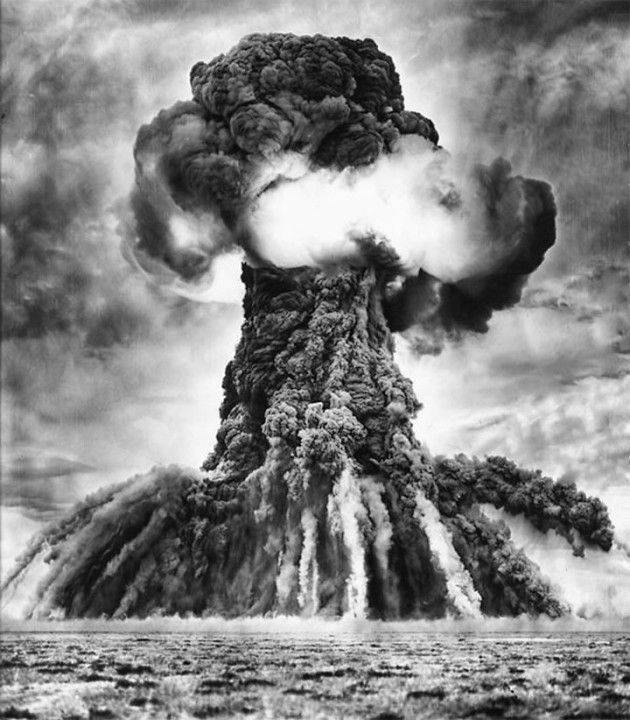
DPRK
In the postwar period, until the collapse of the USSR, the security of North Korea was ensured by Soviet military might. 6 July 1961 was signed in Moscow on the Treaty of Friendship, Cooperation and Mutual Assistance between the USSR and the DPRK. According to Article 1 of this treaty, the parties committed themselves to provide each other with military assistance in the event of an attack on one of the parties.
The collapse of the Soviet Union actually left DPRK one on one with the United States, which was the formal reason for the intensification of nuclear development in North Korea. Nuclear research began there in the second half of 50's. Their motive was the publicity of US plans to use nuclear weapons. weapons during the Korean War 1950-1953's.
In 1956, the first group of nuclear specialists from the DPRK set off for training in the USSR. In 1959, the construction of the Nuclear Research Center in Yongbyon began with Soviet and Chinese aid. There, in 1965, the reactor IRT-2000 with a capacity of 2 MW, supplied from the USSR together with nuclear fuel, was assembled, after which the Koreans subsequently doubled it, with an increase in power to 8 MW. In order to maintain secrecy, this entire nuclear complex in the DPRK has been called the “Yongbyon Furniture Factory”.
The mining of uranium ore began in the mines in Pakchon and Pyansan. At the same time, a uranium ore enrichment plant was being built in P'yansan. The reserves of the DPRK uranium deposits are estimated at 26 million tons of ore, of which about 4 million tons are suitable for industrial mining.
Practical work on the creation of North Korean nuclear weapons began in the 70-s. Having received the refusal of the USSR to assist in the development of a nuclear weapons program, Kim Il Sung turned to China for help. In the second half of 70, North Korean specialists gained access to the Chinese nuclear laboratories and the Lobnor test site. In 1980, the DPRK began the construction of its own gas-cooled reactor with a graphite moderator "Magnox", as well as a plant for the production of fuel assemblies. The name of the reactor "Magnox" comes from the type of nuclear fuel used in these reactors. As a fuel assembly in them serves natural metallic uranium, placed in a shirt of magnesium oxide.
In 1985, North Korea, with the help of Soviet assistance, built a nuclear power plant to the Treaty on the Non-Proliferation of Nuclear Weapons. After that, in 1986, a research reactor with a capacity of 5 MW was supplied from the Soviet Union.
At the same time, the construction of a 50 MW reactor and an enterprise for the reprocessing of spent nuclear fuel and a radiochemical plant for the extraction of plutonium from spent fuel cells are starting in Nenben. In 1985, the construction of a second reactor with a thermal capacity of 200 MW began in Taechon. According to the IAEA experts, this reactor is structurally close to the French G-1 type reactors and, in addition to generating electricity, serves to produce plutonium.
It should be said that the allegations made in the Western media to China and Russia of the alleged help in the construction of North Korean nuclear facilities, where plutonium is produced, are not true. The reactor, which plutonium was accumulated in the DPRK, is a local version of the English reactor, the design of which was declassified as early as the 50 years, and the production line for reprocessing of irradiated nuclear fuel and plutonium separation was created on the basis of the Belgian project. North Korean specialists received access to technical documentation on these Western projects after joining the IAEA.
December 12 1985 representatives of the DPRK signed the Treaty on the Non-Proliferation of Nuclear Weapons, but the work on creating the atomic bomb continued, they were camouflaged by "research for peaceful purposes." Representatives of the IAEA have repeatedly indicated in their reports that the work carried out in the DPRK has a “dual purpose”, and the actual production of plutonium in the existing reactors many times exceeds the reported one.
After the North Korean side in 1993 refused to pay for the construction of a nuclear power plant with light water reactors in the Xingpo area and did not allow IAEA inspectors to go to two of its nuclear facilities, Russia ceased cooperation with the DPRK in the nuclear field. In response, North Korea 12 March 1993 was withdrawn from the NPT. After that, the DPRK nuclear weapons program became the subject of active bargaining with the United States and South Korea. Depending on the improvement or the next aggravation of relations on the Korean Peninsula, North Korea either officially froze or re-activated the work on the development of nuclear weapons.
In exchange for security guarantees and economic assistance, the DPRK leadership in the middle of 90's promised to curtail all military nuclear programs and announced a “suspension” of the entry into force of the decision to withdraw from the NPT. However, excessive US pressure and the failure of the Americans to fulfill the construction of two 1000 MW power reactors in the DPRK that were unsuitable for producing weapons-grade plutonium led to another confrontation and the North Korean nuclear program was in the implementation phase. In December, 2002, North Korea offered to leave the territory of the country to all the IAEA inspectors and removed the seals from the nuclear facilities sealed by them, and on January 10, 2003, Pyongyang officially withdrew from the NPT. At that time, according to the CIA in the DPRK, there was from up to 10 kg of weapons-grade plutonium and 15-20 kg of highly enriched uranium-235. This amount was enough to create several nuclear charges.
Apparently, it was January 2003 of the year that became the starting point when the North Korean leadership decided to implement its nuclear weapons program, no matter what. At that time, the DPRK delegation took an extremely tough position in the ongoing negotiations with the participation of China, Russia, the USA, South Korea and Japan. I must say that the North Koreans had every reason for this. The requirements of the United States and Japan for the complete elimination, under the control of the IAEA or the commission of five states, of all the nuclear facilities of the DPRK did not meet with understanding against the background of events occurring in Iraq. The then North Korean leader Kim Jong Il was well aware that if Iraq had nuclear weapons, the United States most likely would not risk unleashing aggression against that country. And he perceived the American and Japanese demands as a desire to weaken the defense capability of his country.
9 September 2004, an event that many people call the "dress rehearsal" of the North Korean nuclear test. Then, in a remote area of the DPRK, 30 km from the border with China in the northern province of Ryang thundered a powerful explosion, as a result of which a mushroom cloud with a diameter of about 4 km was formed. This caused serious concern in the neighboring countries of the DPRK, but the air samples taken did not record any radionuclides characteristic of atmospheric nuclear tests. Pyongyang remained silent for several days, and only 13 September 2004 of the DPRK Foreign Minister Paek Nam Sun officially declared: "It was in fact the deliberate destruction of the mountain as part of a huge hydropower project."
October 3 2006 North Korea officially announced its intention to conduct nuclear tests, becoming the first country that, not in the official "nuclear club", had warned in advance about the upcoming test explosion. This step was justified by the threat of aggression from the United States and the introduction of economic sanctions aimed at strangling the DPRK. At the same time, the statement noted: "The DPRK is not going to use nuclear weapons first, but on the contrary, will continue to make efforts to ensure the nuclear-free status of the Korean Peninsula and take steps towards nuclear disarmament and a total ban on nuclear weapons."
October 9 2006, the North Korean television, with great fanfare, announced a successful underground nuclear test at the Phungheri testing ground in Yanggando province (Ryangan) at 180 kilometers from the Russian border. The then Russian Defense Minister Sergei Ivanov reported to President Putin that the power of the underground test explosion was within 5 — 15 qt. However, according to updated data, the real power of the explosion did not exceed 0,5 kt. Subsequently, in North Korea claimed that it was a test of a compact charge of low power. However, there are reasonable doubts about the ability of the North Korean nuclear industry to create high-tech compact charges of low power. Thus, in the Soviet Union, shells for “nuclear artillery” appeared only at the beginning of the 80s. Many experts agree that the first officially declared North Korean nuclear test was a bluff, and in reality a large amount of conventional explosives was eroded under the ground. At the same time, the possibility of unsuccessful nuclear testing is not excluded, which has repeatedly happened stories nuclear testing in other countries. Due to the improper functioning of automation, the use of plutonium of insufficient purification or in the case of errors during the design or assembly, a nuclear explosive device could not give the entire planned energy release, nuclear specialists designate such an explosion with an incomplete division cycle by the term "pop".
But, despite the uncertainty about the nature of the explosion, most of the expert community no longer had doubts about the possession of the DPRK nuclear weapons. According to American data, at that time, North Korea had enough plutonium to make 10 nuclear charges.
The second nuclear test in the DPRK took place on 25 on May 2009 of the year, in Pyongyang this event was met with organized triumph of the masses. This time there was no doubt that the explosion was just a nuclear one. According to Russian estimates, its power was within 10 — 20 ct, which is comparable to the power of American atomic bombs dropped on Japanese cities in August 1945 of the year. Following the official announcement of the test, North Korean television threatened the United States, South Korea and "other imperialists" with retribution in the event of any aggressive actions, to which attempts to blockade the DPRK or stop and search for North Korean maritime transport were equated.
In January 2013, North Korea announced its intention to conduct a third nuclear test. The power of the explosive device tested under the ground of 12 February 2013, according to the Ministry of Defense of the Russian Federation was 5-7 kt.
In the summer of 2015, the American reconnaissance satellites recorded the construction of another tunnel at the Phungheri test site. Practically at the same time, the representatives of public relations of the Ministry of Defense of South Korea stated that they have information about the preparatory work in the DPRK for the testing of thermonuclear weapons. Confirming this, Kim Jong-un 10 December 2015 of the year stated that the DPRK had a hydrogen bomb. However, many did not take it seriously, considering Kim's words as another North Korean bluff and nuclear blackmail.
The fact that it was not a bluff became clear on January 6 on 2016, when seismic sensors recorded an earthquake magnitude 5,1 in the DPRK territory, which experts associated with the next nuclear test. However, according to the characteristics of the explosion, its power is estimated at 22 kt, and it is not clear what type of charge was tested. Perhaps it was not a thermonuclear, but only a boosted (boosted) tritium primary nuclear charge.
In an official statement broadcast by the Korean Central Television (KCTV), it was said that the hydrogen bomb test conducted in order to ensure the defense of the DPRK does not threaten anyone. And it is designed to protect the sovereignty of the country and the rights of the nation from the daily growing threat from hostile forces and reliably guarantee peace on the Korean Peninsula. It was also stated that Saddam Hussein in Iraq and Muammar Gaddafi in Libya were destroyed after refusing to develop a nuclear program under pressure from the United States and the West. A recently published report by American experts states that the amount of plutonium obtained in the DPRK is now enough to create 30 nuclear warheads. It also indicates that Pyongyang is planning to significantly expand its nuclear program and intends to build about 100 nuclear warheads by the year of 2020. Even if American experts once again made a mistake and overestimated the number of North Korean charges by half, half of this number would be enough to completely destroy the industrial and infrastructure potential of South Korea.
The number of serviceable combat aircraft in the DPRK air force is very limited. Even the most modern North Korean MiG-29, MiG-23 and Su-25 are unlikely to have a chance to break through to well-covered South Korean and American targets. To consider as carriers the ancient Chinese H-5 bombers, created on the basis of the IL-28, is not serious at all.
From the very beginning of work on the development of its own nuclear weapons in North Korea, ballistic missiles were mainly considered as means of delivery. The first attempts to create land-to-surface missiles were made in the DPRK based on the missiles of the Soviet S-75 air defense system. I must say, the North Koreans were not pioneers in this. Similar missiles were built in the PRC and are still used in Iran. But North Korea needed missiles capable of carrying a warhead weighing at least 500 kg at a distance of more than 300 km. Naturally, the SAM of the C-75 complex could not provide this, and therefore the Juche idea turned their attention to the Soviet Elbrus 9K72 Elbrus with the 8K14 (P-17) liquid missile, known in the West as SCUD. However, these missiles were never delivered to the DPRK, possibly out of concern that North Korea might share them with China.
As a result, North Korea in 1979 managed to negotiate the purchase of Scuds in Egypt. It was from Egypt that the 3 complex was supplied. Egypt, among other weapons, received the P-17 missiles in the early 70's and used them in the war with Israel in 1973. In 1980 — 1981, a group of Korean specialists received training in the operation and use of this rocket complex.
Even 1975, the DPRK and the PRC jointly developed the DF-61 rocket. In the "truncated" version intended for North Korea, this rocket was supposed to have a launch range of 600 km. In the 1978 year, by decision of the Chinese side, all work in this direction was discontinued. But a certain experience was obtained by North Korean experts, and it was useful in developing their own designs based on the Soviet P-17. The P-17 rockets had a fairly simple and clear design based on the Soviet technologies of the end of 50. Metallurgical, chemical and instrument-making enterprises in the DPRK with the assistance of the USSR, which were necessary for the production of rockets, were created in the 50-70-ies, and copying the P-17 did not cause great difficulties. The North Korean version is known under the code name "Hwason-5".
At the end of the 80, this rocket was seriously upgraded, a model known as Hwason-6 could deliver an 700 kg warhead to a range of 500 km — this allowed hitting targets in most of South Korea. However, the Hwaseong-5 and Hwaseong-6 missiles, produced in quantities of approximately 700 units, entered into service not only the North Korean army, they became a very popular commodity on the international arms market. The first buyer of the party of missiles "Hwaseon-5" in 1987 was Iran. Approximately 60 missiles of this type were launched in Iraqi cities. North Korean missiles were also shipped to the United Arab Emirates, Vietnam, Congo, Syria, Libya, and Yemen.
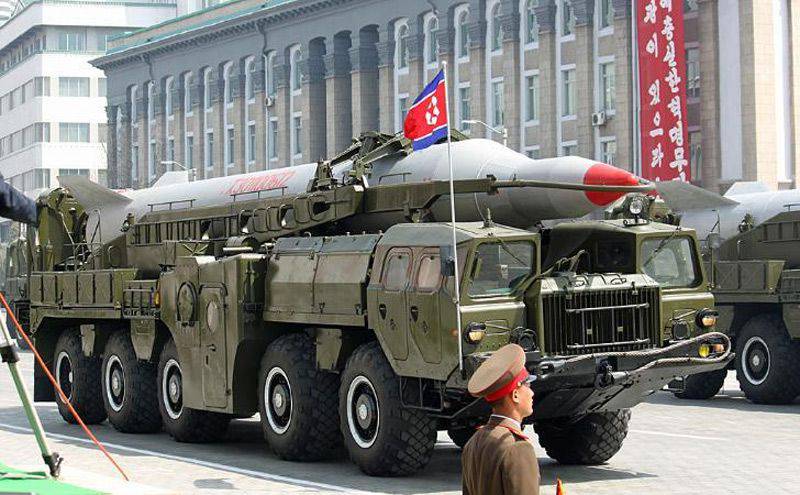
In 2010, a further development variant of this missile, called “Nodon-1”, with a launch range of more than 1000 km, was demonstrated at a military parade in Pyongyang. It is equipped with an 1200 kg warhead and has a XVUMX QUO. 2000 kg warhead and range to 700 km received the name "Nodon-1500".
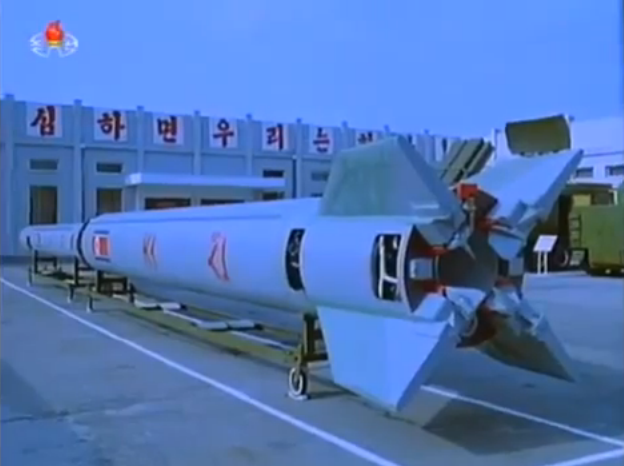
In the middle of 90-x in the DPRK, the first multistage rockets Tephodon-1 (with a range of 2500 km) and Tephodon-2 (6000 km) were created and tested. They consisted of a combination of both proven missile systems and newly created stages.
On the basis of these North Korean ballistic missiles, the Enkha-2 and Enkha-3 launch vehicles were created.
12 December 2012 of the Year “Ynha-3”, launched from the Sohe space center, launched the Kwanmensoon-3 satellite satellite into orbit, after which DPRK became the 10 space power. This demonstrated not only the ability of North Korea to bring artificial objects into space, but also to deliver, if necessary, nuclear warheads over thousands of kilometers. The existing North Korean ballistic missiles are not yet able to strike most of the territory of the United States, but in the area of their defeat are: South Korea, Japan and the US military bases in Hawaii. According to the American and South Korean intelligence services, the development of the Tephodon-3 ICBM with a launch range of up to 11000 km is underway in North Korea. North Korean heavy-class ballistic missiles during test launches demonstrated low technical reliability (around 0,5). Accuracy of hit (KVO 1,5-2 km) allows you to effectively use them only for large area targets, and the time to prepare for launch takes several hours. All this does not allow us to consider North Korean medium-range and long-range missiles, also built in very limited quantities, as effective weapons. But the very fact of creating such missiles in a country with very scarce resources and being in international isolation is a matter of respect. It is believed that Pyongyang may have several dozen medium-range ballistic missiles of various types at disposal.
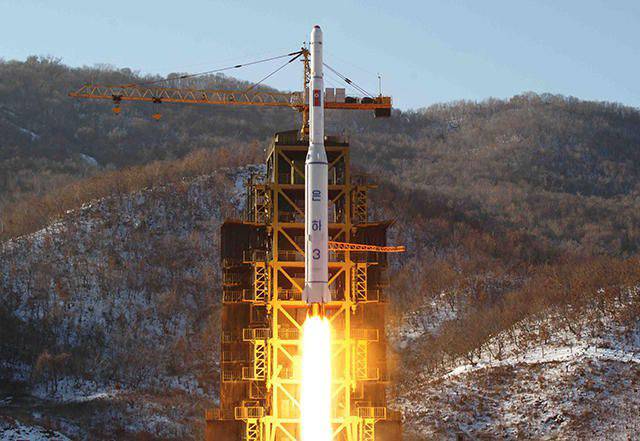
In October, the 2010 of the year at a military parade among other weapons and equipment was also demonstrated a missile system with a mid-range ballistic missile "Musudan". The exact characteristics of this rocket are unknown, but some experts believe that it was created on the basis of the Soviet SLBM P-27 adopted in service in the USSR at the end of the 60's. According to unconfirmed information, designers and engineers from Makeev Design Bureau took part in creating the North Korean rocket.
The launching distance of the MRSA "Musudan" is estimated at 3000-4000 km. In the middle of 2013, the American reconnaissance satellite recorded two launchers with missiles of this type deployed on the east coast of the country in the Hvade-gun district at the Tonkhe missile range. These missiles could be aimed at US military facilities on the Pacific island of Guam.
Presumably, it was the Musudan rocket that was launched from a North Korean diesel submarine. It is possible that during its construction constructive elements of launchers were used, borrowed from decommissioned Soviet diesel-electric submarines of 629 Ave.
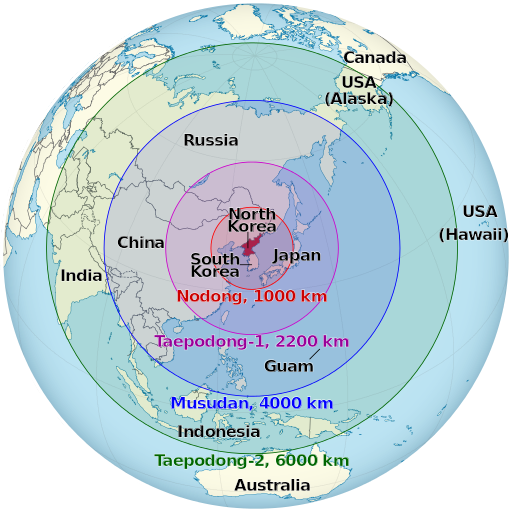
Thus, we are already talking about the creation of a nuclear triad in the DPRK, even if it is very modest in its capabilities. In the extreme case, if military luck completely turns away from the North Korean leaders, they can use the nuclear bombs laid in the path of the offensive by the American and South Korean forces. Undermining a nuclear bomb on the surface of the earth will inevitably lead to a strong radiation contamination of the area and will have disastrous consequences on the densely populated Korean peninsula. No doubt, it will get to the neighbors - China, Japan and the Russian Far East. Given the unpredictability of the North Korean leadership, we also cannot exclude the possibility that it will issue an order to launch a preemptive nuclear strike against its opponents or organize sabotage using a nuclear charge. The likelihood of such a development of events increases with increasing US pressure on the DPRK, in fact, the Americans themselves are provoking North Korea to aggressive actions. At the same time, despite the saber-rattling of weapons and sharp statements, Pyongyang’s nuclear weapon will in the future be a “trump card” and a subject of bargaining in international negotiations. It is already clear that North Korea will not just give up nuclear and missile capabilities, and stability on the Korean Peninsula will depend on the security guarantees that the international community can provide to the DPRK leadership.
The author is grateful for the help in preparing the publication for Anton (opus).
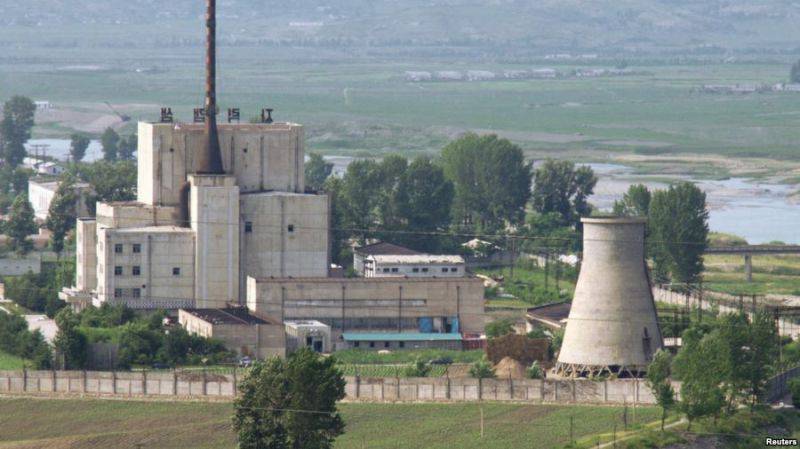
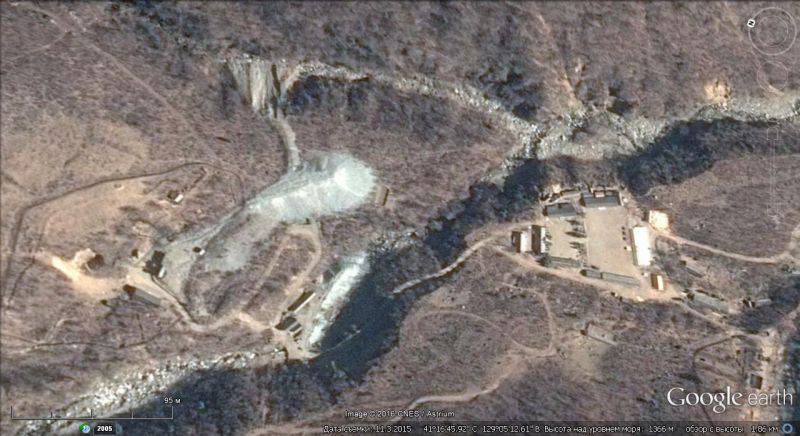
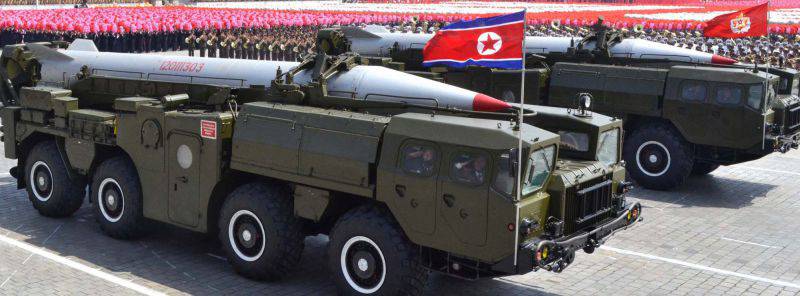
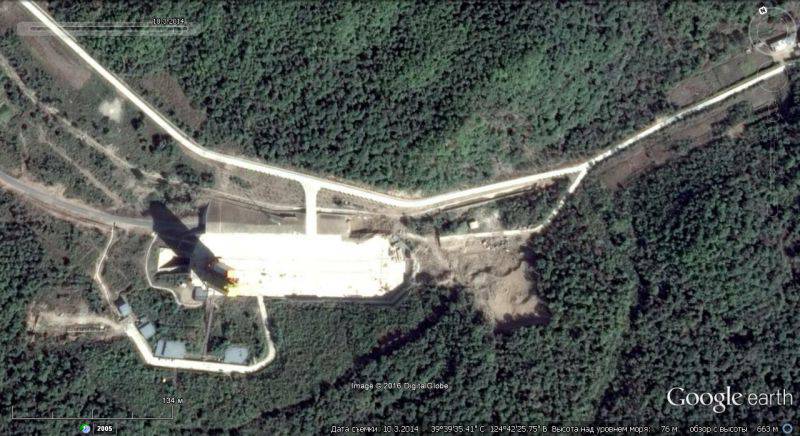
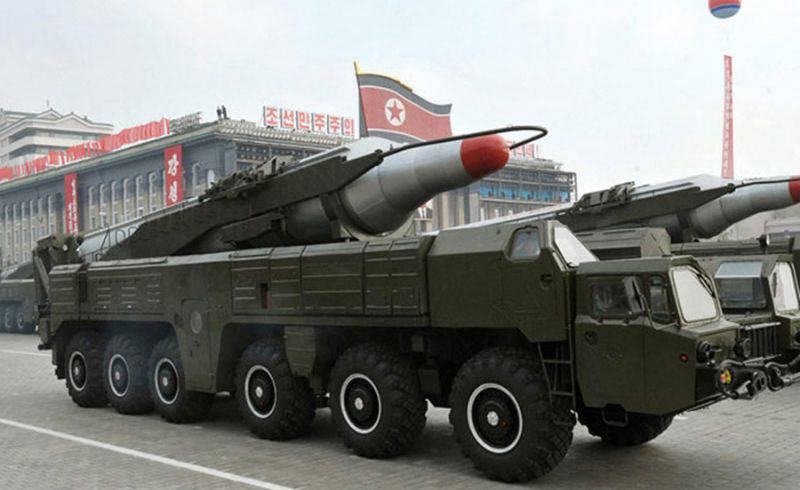
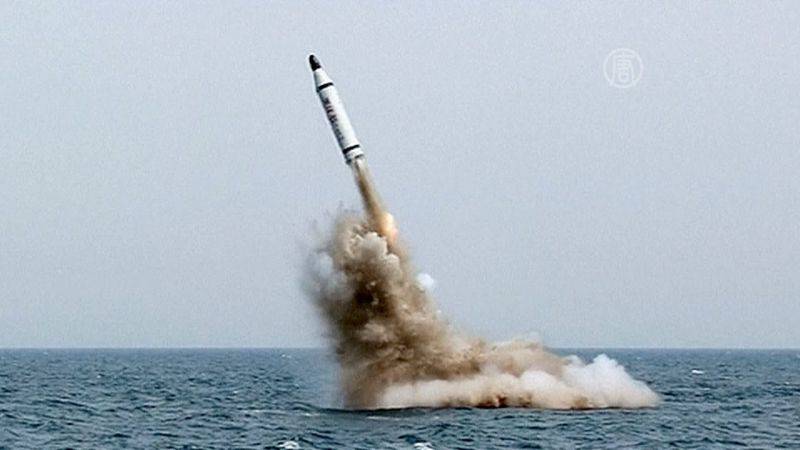
Information